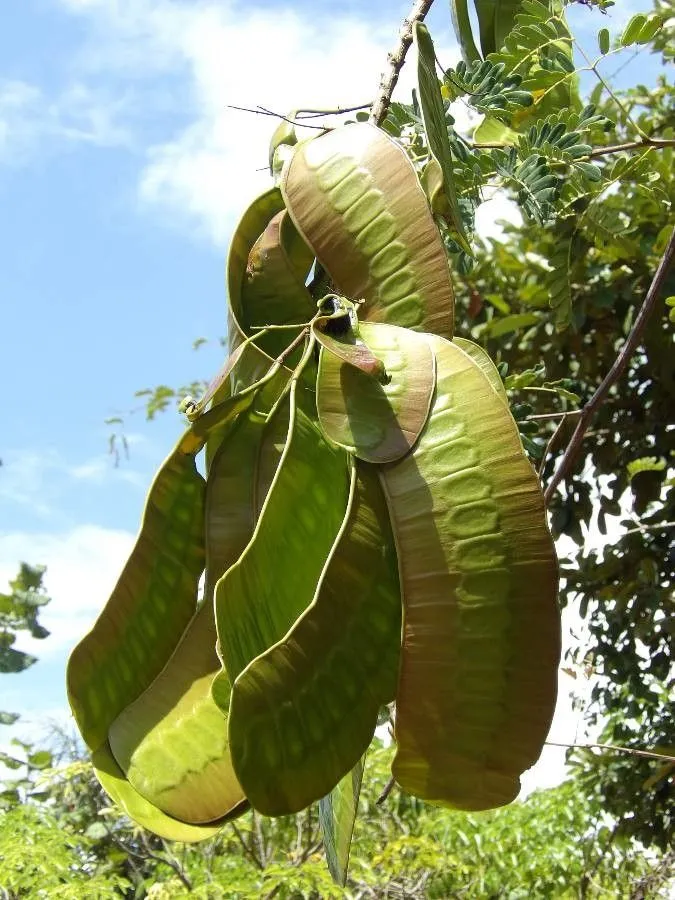
Author: (L.) DC.
Bibliography: Mém. Légum.: 422 (1826)
Year: 1826
Status: accepted
Rank: species
Genus: Entada
Vegetable: False
Observations: Mexico to Trop. America
The Callingcard vine, scientifically known as Entada polystachya, is a notable member of the Fabaceae family. This species, first chronicled in 1826 in “Mémoires sur les Légumineuses”, is attributed to the botanist DC, following the initial classification by Linnaeus.
Native to regions from Mexico stretching through Tropical America, the Callingcard vine is well-adapted to the varied climates within this vast geographical range. The plant thrives in tropical conditions and is frequently observed climbing through the forest canopies, showcasing its remarkable vining capability.
Entada polystachya is recognized for its significant biological and ecological roles in these ecosystems. As a member of the Fabaceae family, the vine contributes to nitrogen fixation, improving soil fertility and supporting plant health in the richly biodiverse habitats it populates. Its robust and sprawling growth habit provides habitat and food for various fauna, enhancing the ecological complexity of its surroundings.
The vine features extensive, elongated seed pods that can be several feet in length, containing large seeds that are often dispersed by water. These seeds have buoyant properties, a unique adaptation that enables the plant to spread across different territories, taking root in favorable conditions.
In addition to its ecological significance, Entada polystachya holds cultural and medicinal value in many local communities. Various parts of the plant have been traditionally used in folk medicine for their purported therapeutic properties, though modern scientific validation of these uses remains limited.
In summary, the Callingcard vine, Entada polystachya, is a remarkable species whose extensive habitat range, ecological contributions, and traditional uses underscore its importance in both natural and cultural contexts within Tropical America.
Eng: callingcard vine
En: Callingcard vine
Taken Jul 7, 2014 by Nelson Zamora Villalobos (cc-by-nc)
Taken Jul 7, 2014 by Nelson Zamora Villalobos (cc-by-nc)
Taken Apr 16, 2022 by Marzanna Bug (cc-by-sa)
Taken Sep 18, 2022 by Gutiérrez Ricardo (cc-by-sa)
Taken Sep 18, 2022 by Gutiérrez Ricardo (cc-by-sa)
Taken Dec 2, 2019 by Guillaume Delaitre (cc-by-sa)
Taken Sep 18, 2022 by Gutiérrez Ricardo (cc-by-sa)
© copyright of the Board of Trustees of the Royal Botanic Gardens, Kew.
© copyright of the Board of Trustees of the Royal Botanic Gardens, Kew.
© copyright of the Board of Trustees of the Royal Botanic Gardens, Kew.
Growth habit>: Shrub, Tree, Vine
Family: Myrtaceae Author: (F.Muell.) K.D.Hill & L.A.S.Johnson Bibliography: Telopea 6: 402 (1995) Year: 1995 Status:…
Family: Rubiaceae Author: Pierre ex A.Froehner Bibliography: Notizbl. Bot. Gart. Berlin-Dahlem 1: 237 (1897) Year:…
Family: Sapindaceae Author: Koidz. Bibliography: J. Coll. Sci. Imp. Univ. Tokyo 32(1): 38 (1911) Year:…
Family: Asteraceae Author: A.Gray Bibliography: Pacif. Railr. Rep.: 107 (1857) Year: 1857 Status: accepted Rank:…
Family: Fabaceae Author: Medik. Bibliography: Vorles. Churpfälz. Phys.-Ökon. Ges. 2: 398 (1787) Year: 1787 Status:…
Family: Aspleniaceae Author: (Cav.) Alston Bibliography: Bull. Misc. Inform. Kew 1932: 309 (1932) Year: 1932…